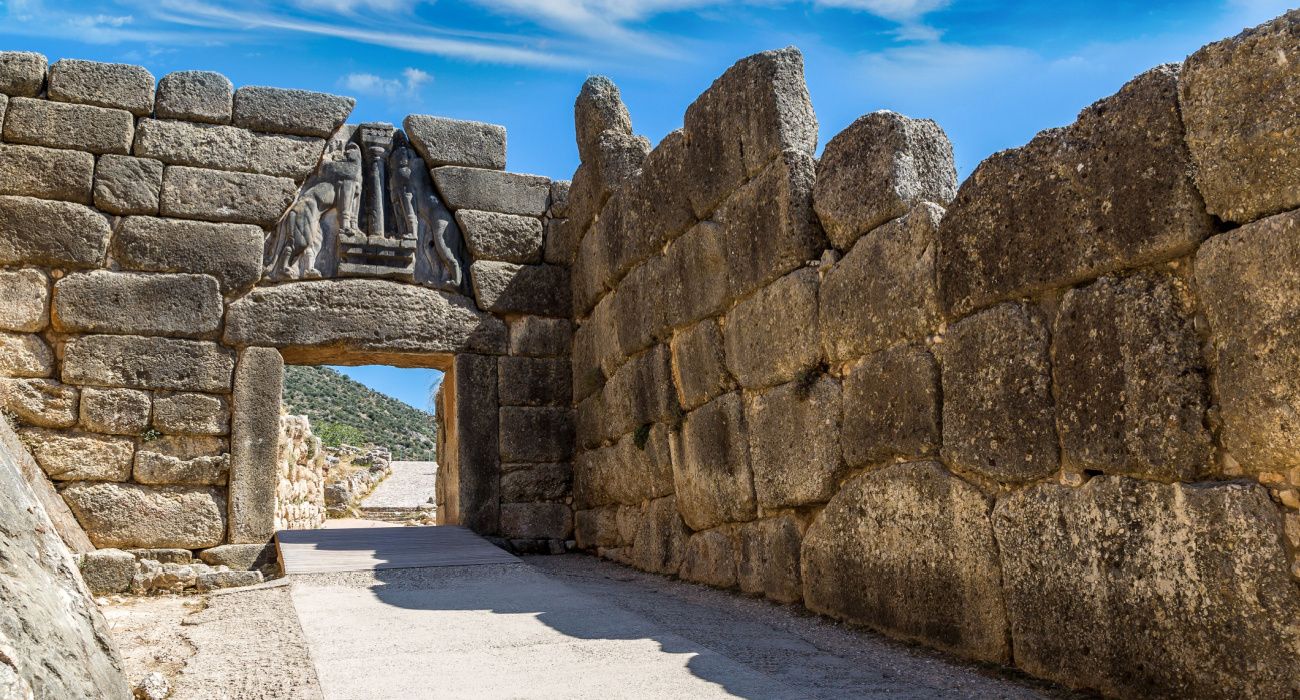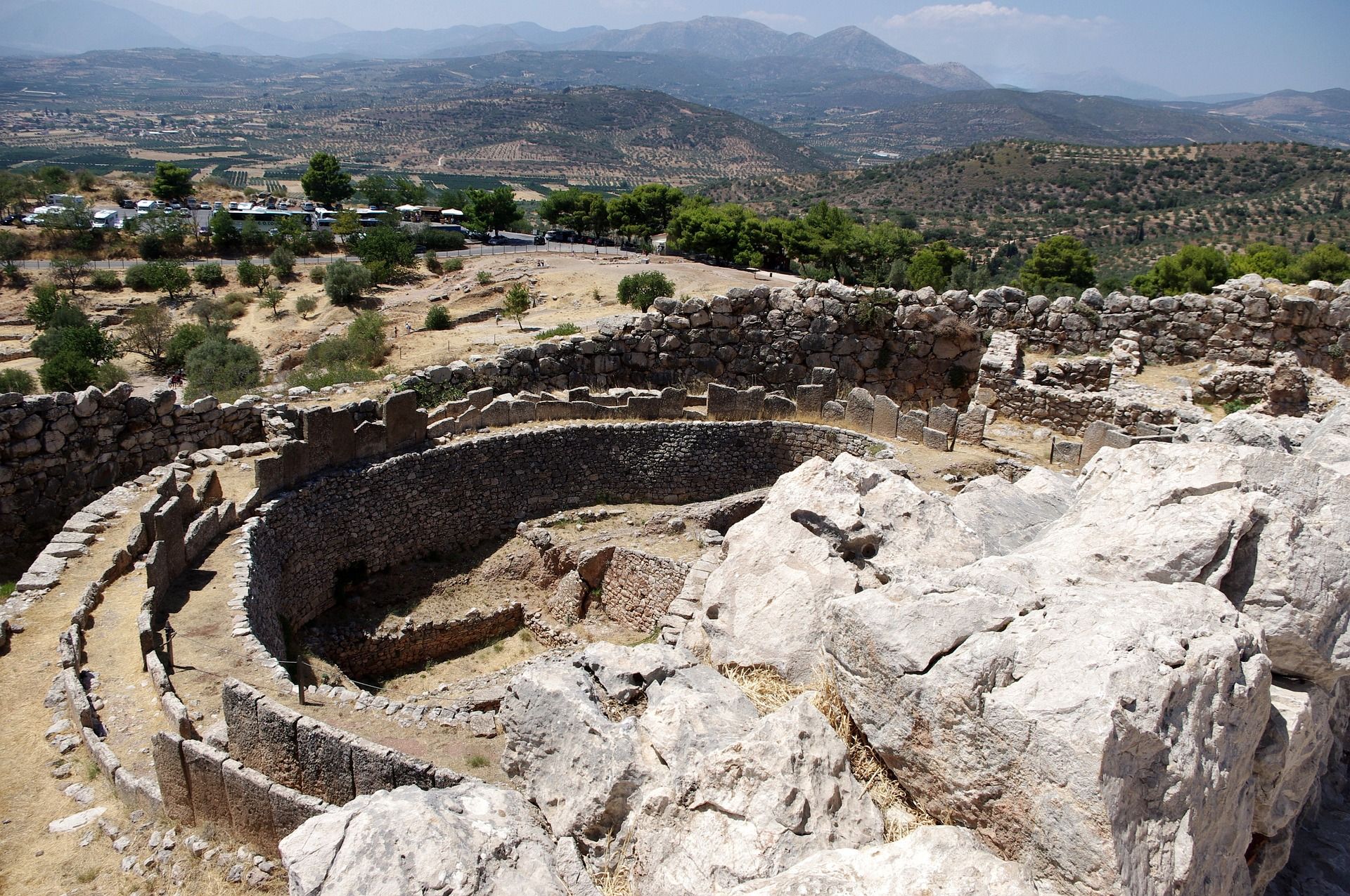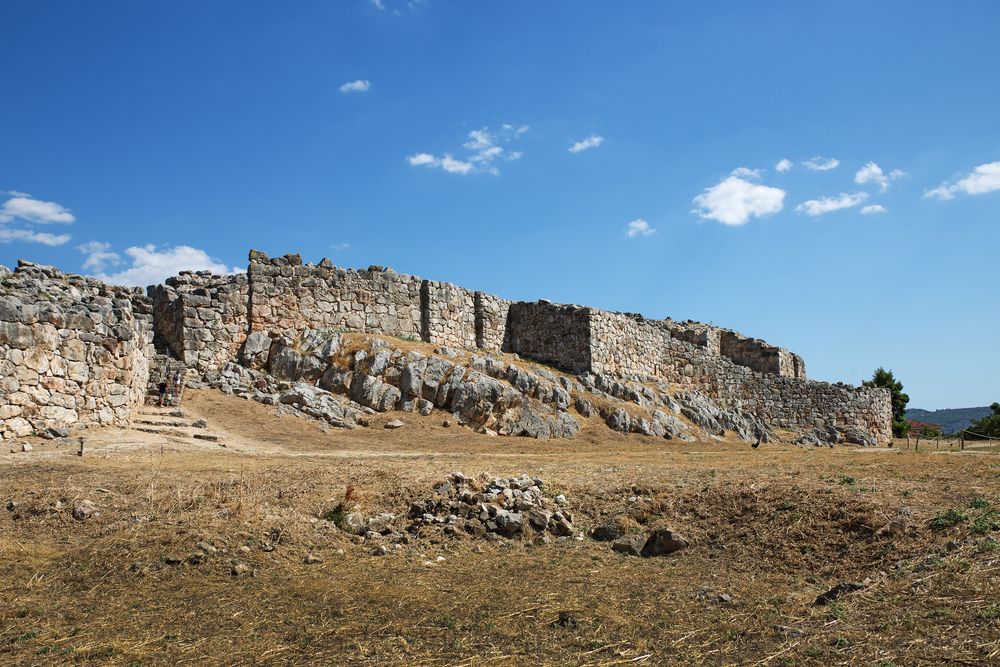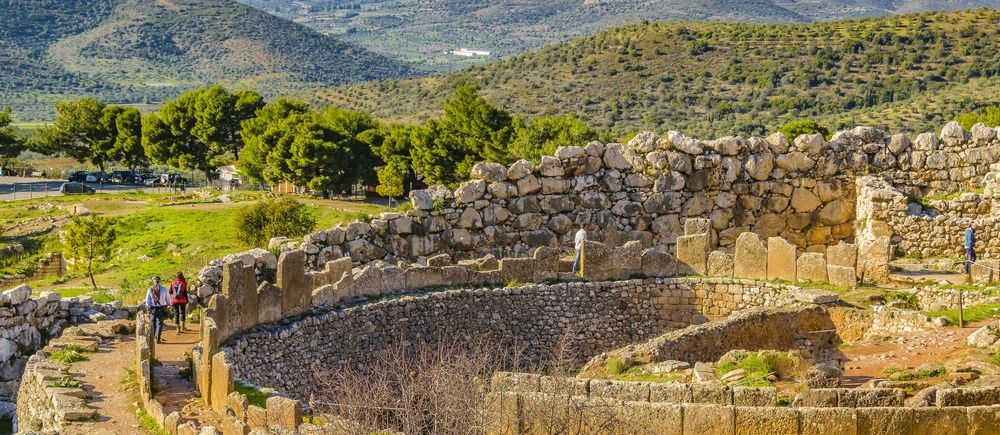Summary
- Mycenae Greece was an important city during the last stage of the Bronze Age in Ancient Greece and is one of the oldest archaeological sites in Greece.
- The collapse of Mycenaean Greece and other civilizations during the Late Bronze Age Collapse in 1200 BC led to the Greek Dark Ages where little was recorded.
- Mycenae and Tiryns, both UNESCO World Heritage sites, can be visited today and contain notable ruins such as the Treasury of Atreus and the Lions Gate.
By the time of Classical Greece when (the 300 Spartans withstood the Persians at the Gates of Thermopylae) Greece was already ancient. It had already had a civilization, called Mycenaean Greece, rise and fall. It was Mycenaean Greece that Homer in his Iliad and Odyssey spoke of as besieging legendary Troy (whose ruins are still visible today in Turkey).
One of the largest and most important cities of Mycenaean Greece was the city of Mycenae on the Peloponnese. Today it is one of the most important and among the oldest archeological sites in Greece. The Athenian Acropolis may be ancient, but the bulk of the ruins visible today date many hundreds of years after the fall of Mycenae.
What To Know About Bronze Age Mycenae Greece
Mycenaean Greece was the last stage of the Bronze Age in Ancient Greece (1750 to 1050). The Mycenaean Civilization collapsed along with many other kingdoms and civilizations of the period with the Late Bronze Age Collapse (1200 BC) after which Greece entered the Greek Dark Ages (between 1100 BC to 750 BC almost nothing was recorded in Greece).
- Period: 1750 to 1050 BC
The cause of the collapse has been a topic of ongoing (and often heated) discussion. Factors may have included earthquakes, internal strife, the Sea Peoples, the Dorian invasion, climatic changes, and more. These factors are also not mutually exclusive.
If Classical Greece is the early beginnings of Western Civilization and democracy, then Mycenae Greece was the heritage of Classical Greece and Athens. Mycenae (along with neighboring Tiryn) features prominently in the Homeric epics of the Iliad and the Odyssey.
There are other ancient Greek places to explore that featured in the Iliad, such as the ancient Ionian Greek city of Assos (now in Turkey).
Agamemnon in the Iliad was the king of Mycenae who led the other Greek kings to fight against Troy (in retribution for Paris of Troy making off with his wife, Helen of Troy).
The City Of Mycenae: The Greatest Greek City Of Its Time
The period of Greek history from circa 1700 BC to 1050 BC is called Mycenaean after this ancient city. Mycenae peaked in circa 1350 BC when it had a population of around 30,000.
- Peak: Circa 1350 BC
- Population: 30,000
Mycenae is located in the north-eastern Peloponnese only around 75 miles from Athens. It was once one of the great military strongholds and largest cities of the period. It once dominated much of Crete, parts of southwest Anatolia, and southern Mycenae Greece.
The city of Mycenae wasn't found until the 1870s when it was rediscovered by an amateur archeologist called Heinrich Schliemann. Previous to that it had only been known from Homer's epics and many thought it to be mythical, much like at one stage, many thought the Biblical Hittite and Babylonian empires were mythical, too.
Tiryns - Mycenae's Mythical Hill Fort Neighbor
Tiryns is located 12 miles south of Mycenae and is the location where the mythical hero, Heracles, performed his Twelve Labors. It was an ancient Bronze Age hill fort and is co-listed with Mycenae as a World Heritage site.
Tiryns reached its peak between 1400 and 1200 BC becoming one of the most important centers of the Mycenaen world. It, too, features prominently in the Homeric epics referred to as the "mighty walled Tiryns."
- Population: Approx. 10,000 to 15,000
Today visitors can see the ruins of the Cyclopean tunnels, an ancient palace, the temple of Hera, and its impressive walls. The walls ran around the citadel for around 750 meters (800 yards). Its walls were even larger and more impressive than those of Mycenae measuring up to 8 meters (26 feet) thick and 13 meters (42 feet) high.
What To Know About Visiting The Archeological Site Of Mycenae & Tiryns Today
The archeological site of Mycenae and Tirns have been UNESCO World Heritage listed since 1999 and is now one of the top archeological day trips visitors can take from Athens. It is worth visiting both Mycenae and Tiryns on the same day.
- Admission Fee: 12 Euros ($14) - Mycenae only
- Combined Ticket: 20 Euros ($23) - Mycenae, Tiryns, Asini, Palamidi, Museum of Nafplio, & More (valid for three days)
- Opening Hours: 8:00 am to 7:00 (summer)
- Purchase the combined ticket to see both Mycenae and Tiryns.
Notable ruins at Mycenae & Tiryns include:
- The Treasury of Atreus or Tomb of Agamemnon: A massive ancient burial mound and chamber
- Tomb of Clytemnestra: A Large Vaulted Tomb From Circa 1200 BC
- Lions Gate: The Best Preserved Mycenae Gate
- Walls of Tiryns: Even Larger Than Those of Mycenae
The ruins visitors find at Mycenae are truly ancient - by comparison, the famous Parthenon of the Athenian Acropolis was built in 447 BC, around 700 years after Mycenae had collapsed.





